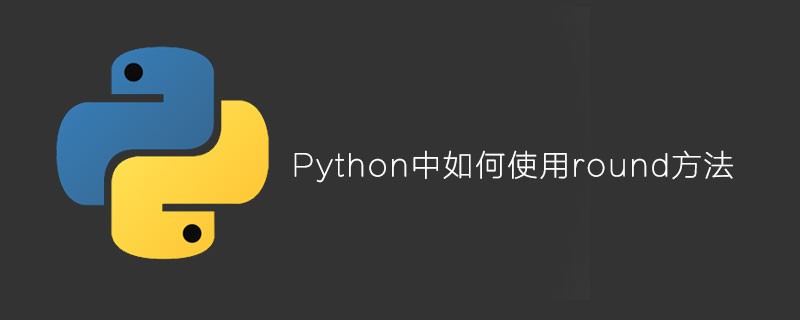Python中如何使用round方法

round函数是一个用于四舍五入的函数;
在python3中,round(1.0/2.0)得到的是1,而在python2中,round(1.0/2.0)得到的是0
$ python Python 2.7.8 (default, Jun 18 2015, 18:54:19) [GCC 4.9.1] on linux2 Type "help", "copyright", "credits" or "license" for more information. >>> round(0.5) 1.0
$ python3 Python 3.4.3 (default, Oct 14 2015, 20:28:29) [GCC 4.8.4] on linux Type "help", "copyright", "credits" or "license" for more information. >>> round(0.5) 0
使用的一般语法是round(number,digits)
number,要四舍五入的数,digits是要小数点后保留的位数
如果 digits 大于 0,则四舍五入到指定的小数位。 如果 digits 等于 0,则四舍五入到最接近的整数。 如果 digits 小于 0,则在小数点左侧进行四舍五入。 如果round函数只有参数number,等同于digits 等于 0。
返回的值是四舍五入后的值
其四舍五入的规矩一般为如下:
(1)要求保留位数的后一位如果是4或者4以下的数字,则舍去, 例如 5.214保留两位小数为5.21。 (2)如果保留位数的后一位如果是6或者6以上的数字,则进上去, 例如5.216保留两位小数为5.22。 (3)如果保留位数的后一位如果是5,且该位数后没有数字。 例如5.215保留两位小数为5.21,5.225保留两位小数为5.22。 (4) 如果保留位数的后一位如果是5,且该位数后有数字。则进上去,例如5.2152保留两位小数为5.22,5.2252保留两位小数为5.23, 5.22500001保留两位小数为5.23。 >>> round(5.215,2) 5.21 >>> round(5.225,2) 5.22
来源:PY学习网:原文地址:https://www.py.cn/article.html

